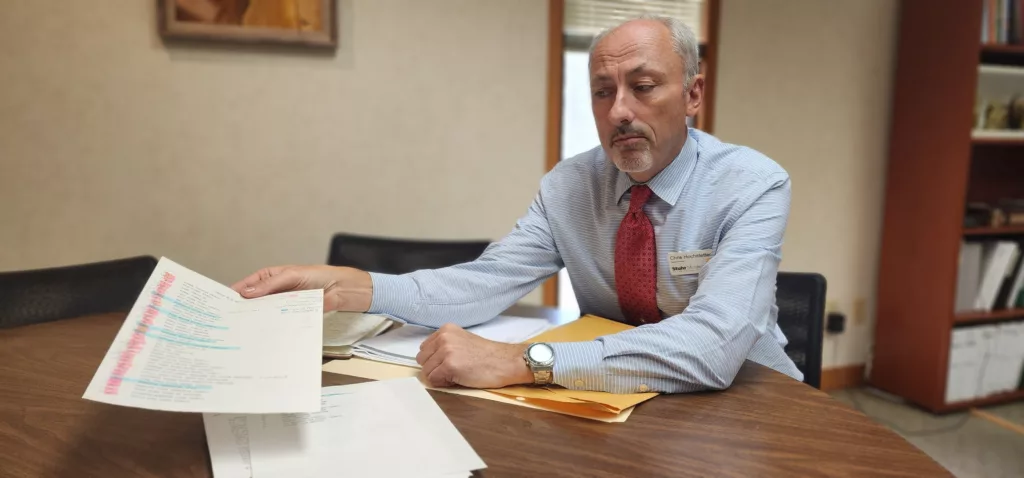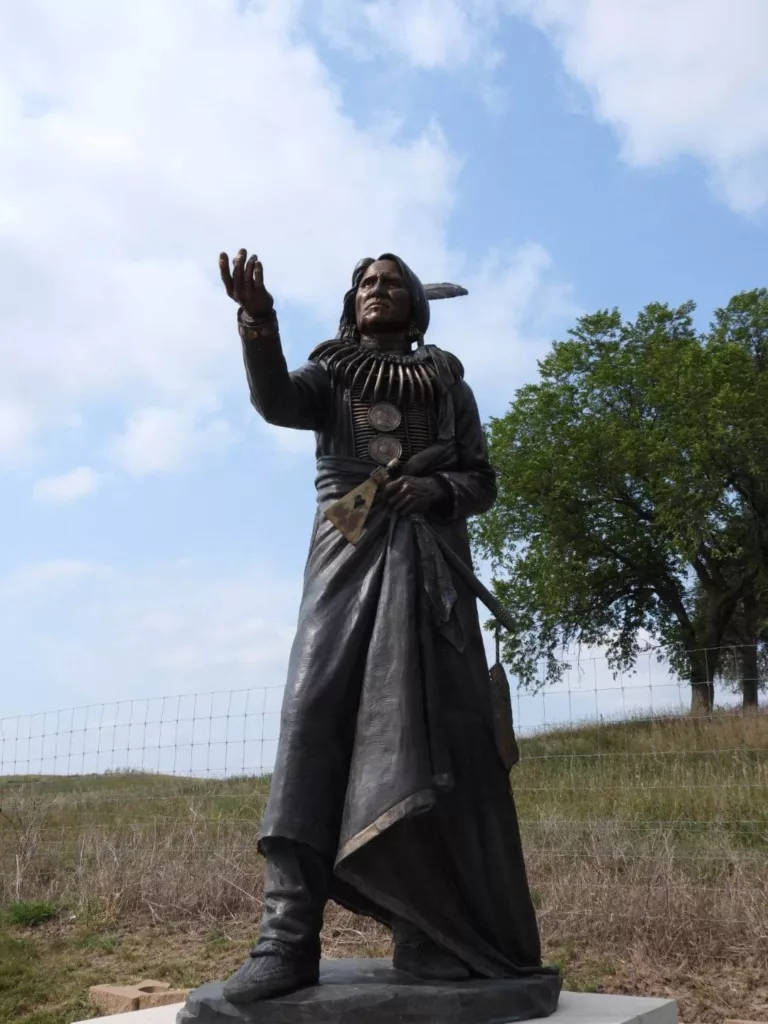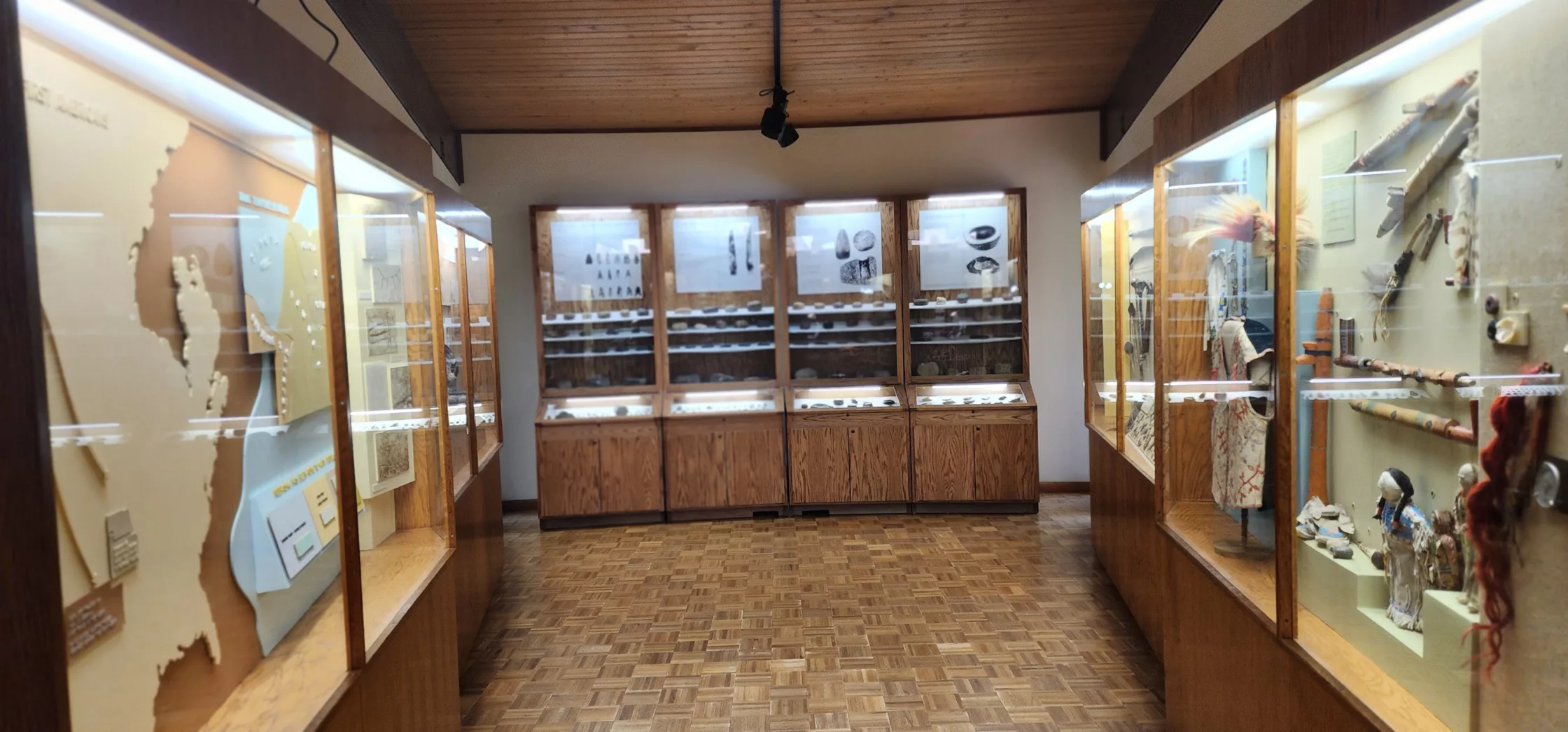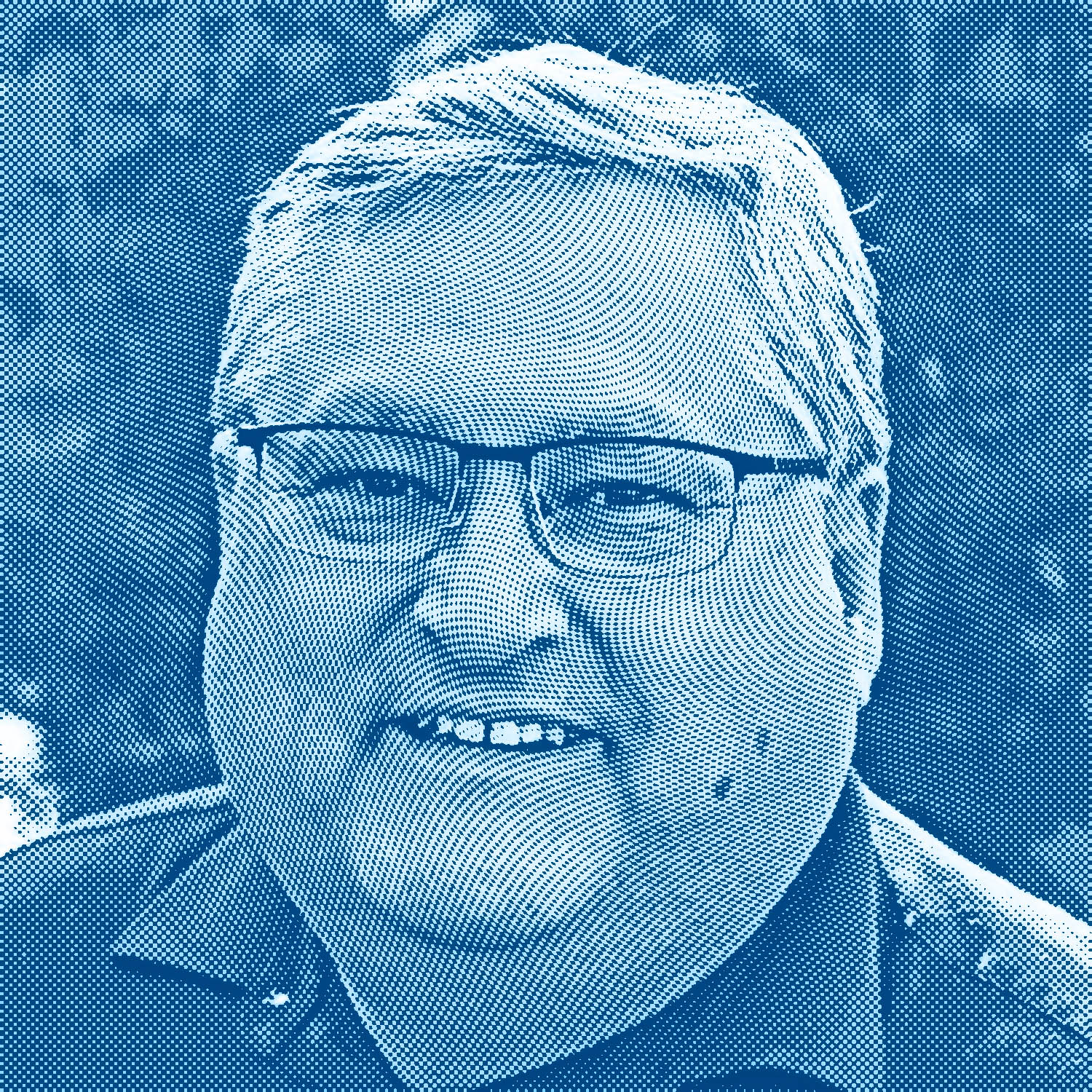The ax cut through the thick rope, sending 38 Santee Dakota men to their deaths. The largest mass execution in American history happened in freezing temperatures on Dec. 26, 1862, before hundreds of residents in Mankato, Minnesota.
Thrown into a shallow grave, the bodies were exhumed within a day, mostly by physicians who sought to use them as cadavers for experiments. Only one set of remains from that day – the warrior Cut Nose – has been returned to the Santee, who were then forcibly relocated to Nebraska.
The inability to provide a proper burial is a familiar atrocity for tribes across the U.S., where the push to correct those injustices has found renewed energy since the 2021 discovery of mass graves at Indian boarding schools in Canada.
Now multiple Nebraska museums in possession of Native remains say they are either on the verge of returning or restarting efforts to return them to their rightful tribes – an act known as repatriation.
That includes 39 sets of remains held by History Nebraska, the state agency long known as the Nebraska State Historical Society. At the Hastings Museum, a curator says he’s establishing tribal connections needed to launch repatriation efforts for the 81 sets of remains that the museum hasn’t returned.
Eight institutions in Nebraska reported they possessed – or still possess – Native remains, this April, according to National Park Service data compiled by the news outlet ProPublica.
The three with the most – the University of Nebraska State Museum, History Nebraska and the U.S. Department of Defense – all have made 90% or more of the remains available for return. The Hastings Museum and the U.S. Department of the Interior – the fourth and fifth largest caches of remains – each had return rates near 55%. The remaining three institutions reported sets of remains in the single digits.
Some institutions have made progress, but outreach efforts still need to improve, said Sunshine Thomas-Bear, preservation officer for the Winnebago Tribe, one of four tribes established in Nebraska.
“Museums can have thousands of remains for repatriation, but if they are failing to communicate and contact the correct tribes, and make those consultations efforts, they will continue to sit there in museums … I think Nebraska still has a long way to go in the repatriation process,” Thomas-Bear said.
Repatriation efforts in Nebraska have improved over the past 20 years, say people like Walter Echo-Hawk, former president of the Pawnee Nation of Oklahoma. Gone are the days when museums ignored Native American wishes while displaying their ancestors as museum exhibits.
Echo-Hawk became one of the first Native American representatives seeking repatriation in the 1980s. He did so on behalf of the Pawnee, one of more than a dozen tribes that the U.S. government removed from Nebraska.
The agency then known as the Nebraska State Historical Society “fought us every step of the way,” Echo-Hawk said. “They ignored us.”
But times have changed, Echo-Hawk says.
In 1989, the Nebraska Legislature passed Legislative Bill 340, which required the return of Native American remains and funerary objects. Echo-Hawk credits the law, sponsored by former Sen. Ernie Chambers, with being the foundation of a national law passed by Congress in 1990.

The Native American Graves Protection and Repatriation Act provides a process for identifying and returning tribal remains and objects from organizations, such as government agencies and museums, that receive federal funding.
Even with state and federal legislation, the process did not go smoothly.
In 1998, allegations that a University of Nebraska-Lincoln anthropology professor had mishandled Native remains touched off a firestorm. A graduate student alleged that the professor had, among other offenses, manipulated the skull of a Native child so that it appeared to be talking.
An Nebraska State Patrol investigation ended without criminal charges and UNL reached an agreement with tribes to return the remains.
According to the ProPublica database, the university’s museum has made 1,965 remains available for return, while 49 still haven’t been made available.
The 49 sets of remains have been identified as unaffiliated because experts haven’t been able to confirm their tribe’s identity, said Susan Weller, director of the University of Nebraska State Museum. She says the museum has consulted with 37 Great Plains tribes as well as a few in the southwest U.S.
“We are focused on the Plains,” Weller said. “It’s not a quick process, but we are working towards full repatriation of all the ancestors.”
The ProPublica database also includes data on funerary objects.
History Nebraska has made 9,974 objects available for return, though History Nebraska maintains the actual number is 80,000 because it counts each bead as an item, said Dave Williams, the state’s archaeologist.
The 39 sets of remains that History Nebraska still has will soon be handed over to the Pawnee, Williams said.
The Pawnee tribe, which owns land scattered across central Nebraska, will hold services for the remains when they’re reburied.
“We will … bury them in an undisclosed location,” said Marti Only A Chief, the Pawnee NAGPRA officer in Oklahoma. “We don’t want them stolen again.”
The Stuhr Museum in Grand Island questioned the finding that it has two sets of remains that haven’t been made available for return.
Based on museum records, the last set of Native American remains were returned in 2009, according to Chris Hochstetler, the Stuhr’s executive director.

It’s possible that either the NAGPRA office didn’t update the database or previous museum staff didn’t submit the updates. The situation is being corrected, he said.
“The only remains we have now are white people,” he said. “Now, does that mean we don’t have some funerary objects or culturally-significant items that we haven’t identified yet? I can’t clearly answer that. As we go along, we may find some. We will work to have those returned.”
At the Hastings Museum – with a 57% return rate – curator Dan Brosz said he is working to restart repatriation efforts. The museum has 81 sets of remains that haven’t been made available for return.
“The whole problem is that when these remains were stolen, no one kept records of where they took them from,” Brosz said.
While most Nebraska remains returned were Pawnee, some of the remains he’s working with now are from across the country, Brosz said. They’re often culturally unidentifiable or unaffiliated, he said.
“So we need to bring the separate tribes together and see how they want to handle it,” Broz said. “Since I’ve been here, I’ve gone through and reestablished connections with the tribes because during COVID, everything kind of fell to the wayside, but we had a lot of great success in getting communications with the various tribes from Florida to Oregon.”

The horrifying discoveries of mass graves at Indigenous boarding schools in Canada rekindled public awareness and led to a reexamination of similar schools in the U.S..
That includes the former Genoa U.S. Indian Industrial School in Nebraska. The Omaha World-Herald reported in July that an excavation effort to find a potential gravesite did not uncover any remains. At least 86 children are believed to have died at the school, the newspaper reported.
While much of the recent attention has focused on remains, repatriation efforts also extend to artifacts and culturally significant items.
Representatives of Nebraska’s four tribes – Winnebago, Ponca, Omaha and Santee – say repatriation is key to their past and their future.
“Taken, piece by piece, these items comprise a tribe’s history and culture,” said Judi gaiashkibos, executive director of the Nebraska Commission on Indian Affairs. “The tribes’ pasts have been stolen, their language, their land, their tools, art and most personal possessions. Although past wrongs cannot be undone, the return of these items, personal and sacred, provides remembrance, healing and a path forward.”
Last year, the Ponca Tribe of Nebraska successfully recovered Chief Standing Bear’s tomahawk from Harvard University’s Peabody Museum of Archaeology and Ethnology.
The Ponca chief gifted his ceremonial tomahawk to John Lee Webster, the attorney who represented him during an 1879 trial that resulted in Native Americans being considered people under the U.S. Constitution.
Omaha attorney William Morris obtained the tomahawk, which was later sold and then given to the Harvard museum.

“Tribal items were not supposed to be away from the people,” said Stacy Laravie, Ponca tribal preservation officer. “Standing Bear gave that tomahawk in a sense of brotherhood. So, when it ended up in the hands of a museum, that relationship was broken.”
After months of negotiation, the museum returned the tomahawk to the Ponca during a June 2022 ceremony.
The tomahawk will be shared with the public as part of a historical exhibit at a planned Ponca cultural center in Niobrara when it opens in three to five years, Laravie said.
The Ponca have recouped more than 300 other historical and cultural items, ranging from beadwork to burial objects, Laravie said.
In several ways, the COVID-19 pandemic may have aided repatriation efforts.
Since many museums accepted COVID-related funding from the federal government, they must comply with federal law and share their collections with tribes, said Thomas-Bear, who also serves as the Winnebago tribe’s NAGPRA representative.
Lockdowns during the early days of COVID led universities and museums to take a serious look at their inventories and what should be returned to the correct tribe, Laravie said.
Returning these items to the tribes is crucial for healing, but it’s only a first step, according to Laravie, who believes tribes need to take the extra step to reuniting the artifacts with the land.
“Everything is connected,” she said. “Whether it’s seeds or an ancestor, their belongings, or even the small children in the boarding schools, missing and murdered tribal members, being returned to their people, they need to put them in place. It’s a bringing back of something to its mother.”
The Flatwater Free Press is Nebraska’s first independent, nonprofit newsroom focused on investigations and feature stories that matter.







1 Comment
Thank you for your work on this, Tim. Museum’s have a solemn obligation to get this right and it won’t be until all of the Ancestors are returned to their home.